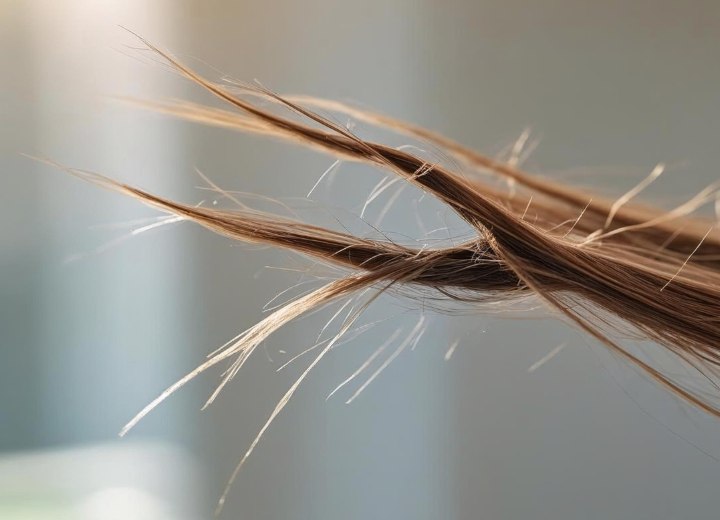Split Ends & Hair Trimming

A: Split ends and damaged hair ends are actually quite straightforward to identify once you understand what signs to look for, though many people initially struggle with recognizing the difference between naturally fine hair and genuinely damaged ends.
For those with shorter hair or anyone who has difficulty examining their hair ends, investing in a small handheld magnifying mirror can be incredibly helpful. This allows you to get a clear, close-up view of individual strands without straining your eyes. Another effective method is to twist small sections of your hair gently. Damaged ends will often stick out from the twisted section, making them much easier to spot.
It's important not to confuse the natural appearance of fine or thin hair with actual damage. Fine hair naturally has smaller diameter strands, which can make the ends appear more delicate, but this doesn't necessarily mean they're split or damaged. Healthy fine hair will still come to clean points at the ends, whereas truly damaged hair will show that characteristic splitting.

However, your individual trimming needs may vary based on several factors. If your hair is naturally very dry, chemically treated, or if you use heat styling tools frequently, you might find that you need more frequent trims. Conversely, if you have naturally oily hair that's never been chemically treated and you use minimal heat styling, you might be able to stretch the time between trims to eight to ten weeks.
Pay attention to your hair's behavior between trims. If you notice increased tangling, excessive breakage, or if your hair feels rough or catches on your clothing more than usual, these are signs that you may need to trim more frequently. On the other hand, if your ends still look and feel healthy at the eight-week mark, you might be able to wait a bit longer.
©Hairfinder.com
See also:
How to get rid of split ends
How to repair split ends
Does flat ironing cause split ends?